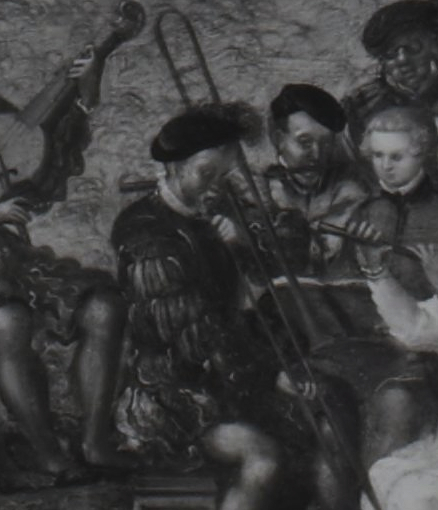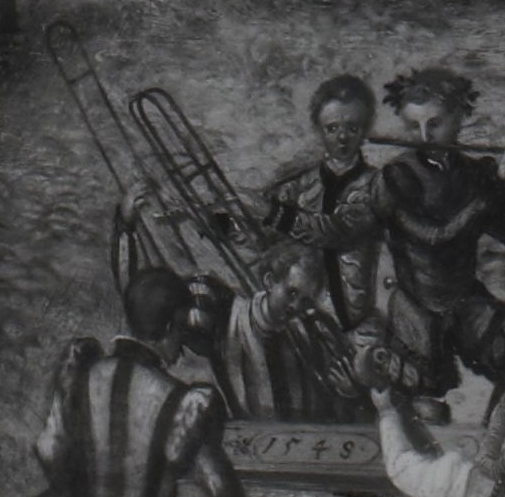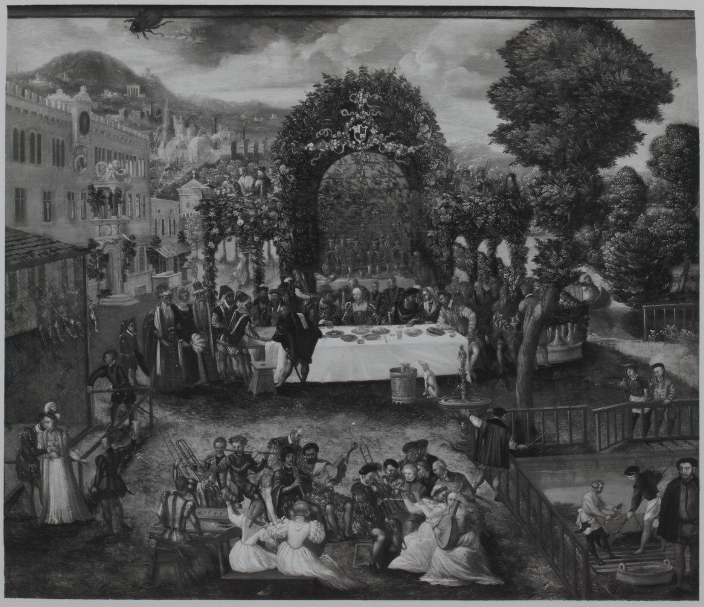Would you allow a trombone at your table?
There are numerous documented examples from the Renaissance of trombones performing during meals—“at table”—or in connection with various banquets and feasts. Below are some drawn from the Trombone History Timeline (16th century), including the image shown at the top of this post that I added just last week (see c. 1550).
_________________
1520—Rome, Italy: Marcantonio Michiel, a Venetian patrician, records the following in his diary: “On Sunday 24 June, the day of St. John….the pope hosted a dinner, also in the Castello, where there was a musical performance by eight voices, eight lironi, seven flutes and a trombone” (Blackburn, Music and Festivities).
1529—Ferrara, Italy: Music is played at the court on 5 trombones and a cornett during the 5th course of a wedding banquet. Music during the 7th course includes a trombone (uno trombone), 2 dolzaine, one storta, and one cornetto grosso. During the 8th course, music is played on a trombone (uno trombone), 5 viols, one strumento di penna, a flauto grosso, a lira, and a flauto d’Alemana (Reese 546; Boydell, Crumhorn 37, 389). About the Cena di Pesce (Banquet of Fish), the records states, “And as this course was on the table, a dolzaina, a trombone [uno trombone], and a flute played…a dolzaina, a great bass viol, two cornamuse and a cittern” (Boydell, Cornamuse 389, 416).
1537—Bologna, Italy: The shawms of the town wind band are replaced by 4 cornettos, while the lower parts are played by 4 trombones (Kurtzman, Trombe). The ensemble, called Concerto Palatino, labels the subset of the cornetts and trombones musici. The musici’s duties include 2 daily concerts from the balcony of the Palazzo Pubblico. On Sundays, feast days, and special occasions, they join the lute and harp in performing table music for the signori and their guests. The musici and trumpets also travel with civic leaders whenever they leave the palace on official business (Guion, Missing Link).
1538—Siena, Italy: The members of the civic wind band, including the trombonist, are upbraided for being derelict in their duties, particularly when they are supposed to be playing during lunch and dinner. The trombonist is singled out for his many absences. After noting that the group has been censured previously, the priors (city rulers) resolve that any musician who fails to appear at required times in the future will be fired immediately. Also, substitutes will no longer be allowed, and absences will only be excused in the case of illness, and then only in advance (D’Accone, Civic Muse 549).
c. 1545—Germany: Hans Sebald Beham’s print, Le banquet d’Hérode, includes what is probably a trombone—or possibly even a pair of trombones (see detail and full image below; public domain) (French National Library).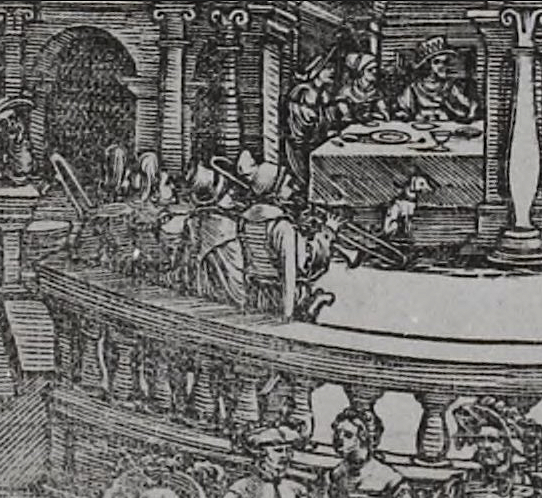
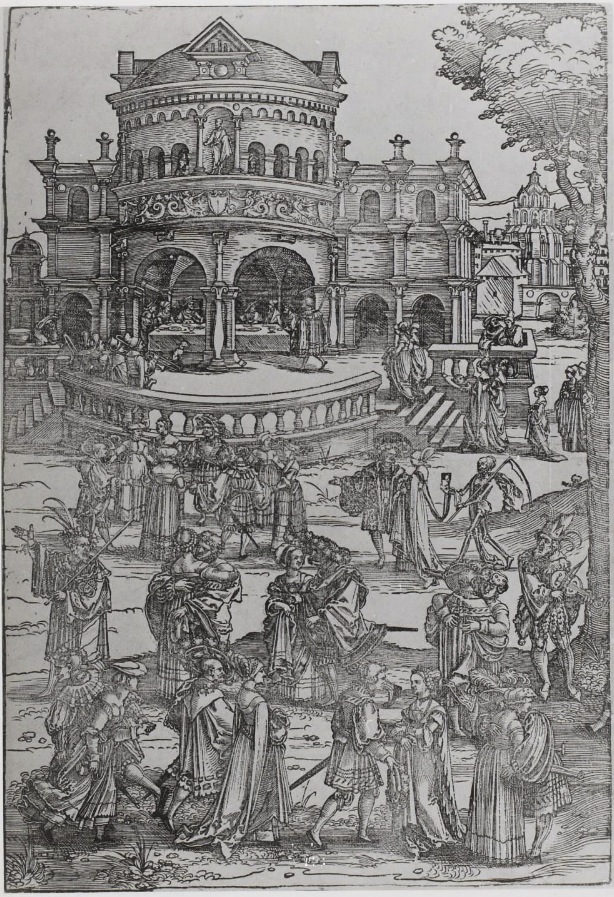
1549—Munich, Germany: Outdoor Feast, a painting by Hans Mielich (Müelich), court painter for Duke Albrecht V, depicts an outdoor wedding banquet. The music ensemble includes 2 trombone players, one of whom appears to have multiple instruments in his hands and is apparently in the act of switching from one trombone to another. The painting also shows, in a different area, a dance band consisting of 2 trombones and another instrument (probably a shawm) (see 2 details and full image below; public domain images) (Kenton plate 14; Buchner plate 95).
c. 1550—A painting attributed to Cornelis Kettel called La fete des rois includes a trombonist performing with a wind trio at a royal feast (see detail and full image below; public domain) (French National Library).

c. 1575—Scene biblique avec banquet, by an unknown artist, depicts a group of musicians performing from a balcony or raised platform during a banquet. The instrumentation appears to be 3 shawms and a trombone. Based on other depictions of trombones in biblical feasts (see c. 1545 and c. 1580), and based on the group’s instrumentation, the date of the work is probably mid- to late-16th century (see detail and full image below; public domain) (French National Library).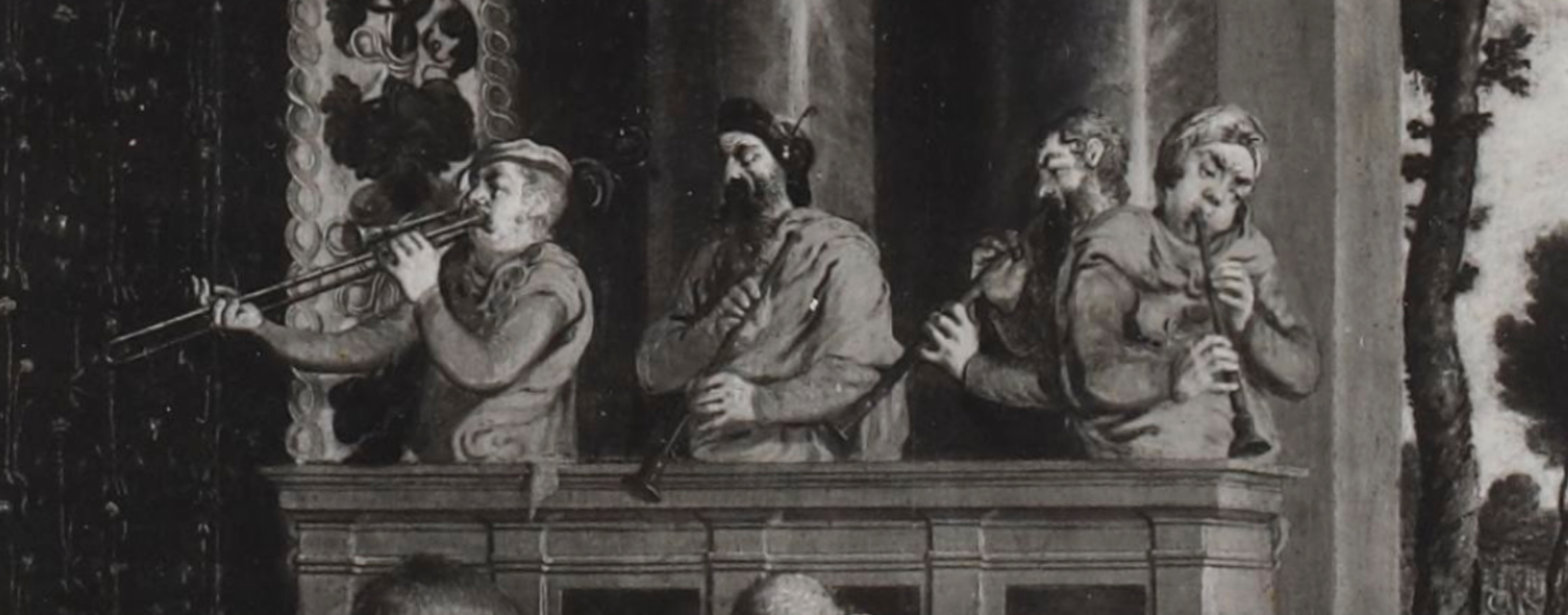
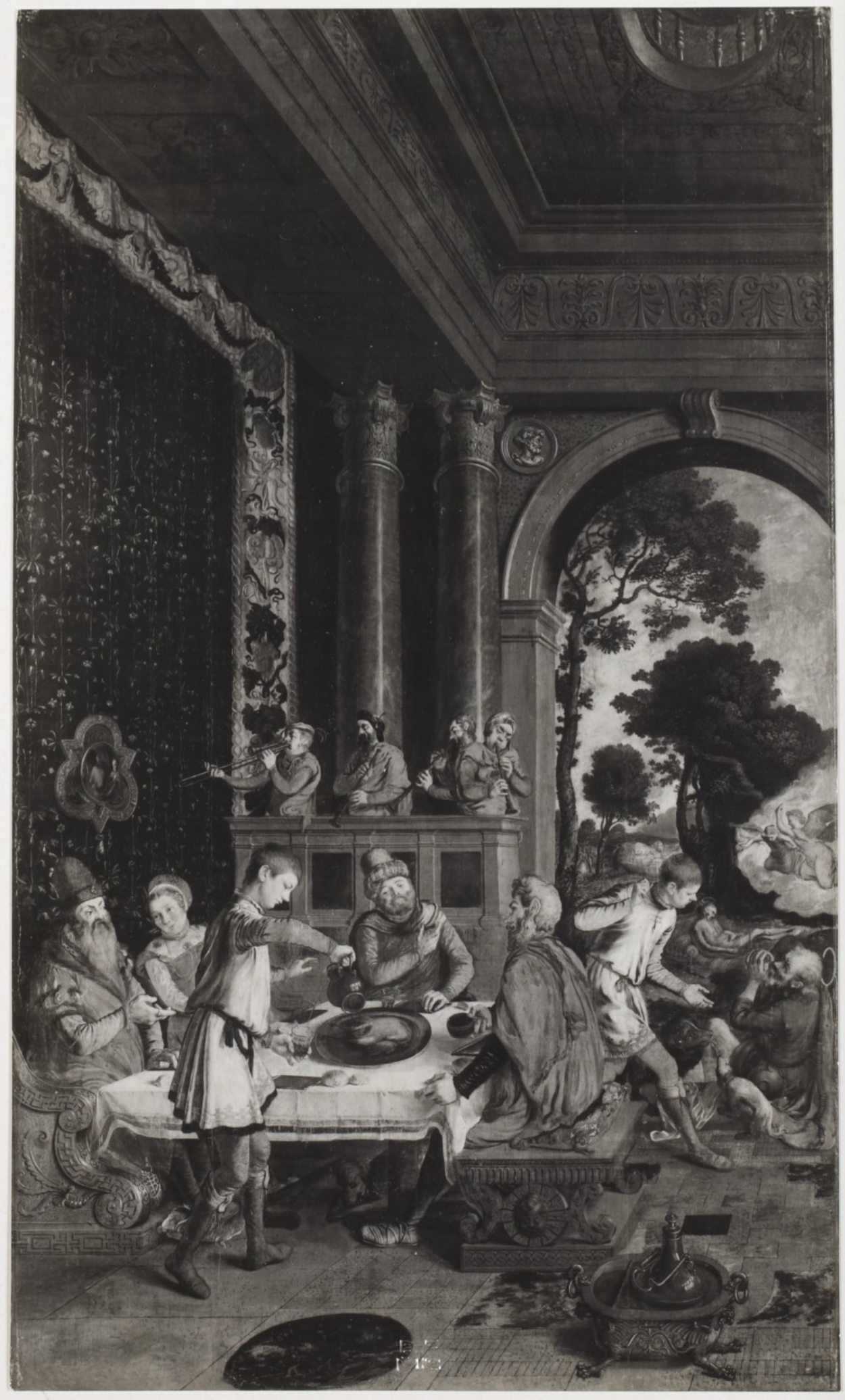
c. 1580—Innsbruck, Austria: An anonymous painting etitled Gastmahl des Herodes depicts a trio of instrumentalists that includes trombone, performing under a porchlike structure in the background (see detail and full image below; public domain) (Salmen, Bilder 36; Innsbruck, Tiroler Landesmuseum Ferdinandeum). The painting is probably a copy of an image from 1516 (thus the date on the lower-middle of the painting itself).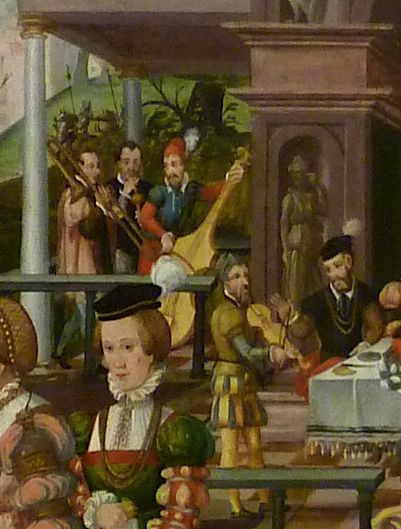

1583—Ferrara, Italy: Duc de Joyeuse visits Duke Alfonso. A letter describing the event mentions mealtime entertainment that is apparently commonplace: “They heard mass in the small chapel and then went to eat, with music as usual by trombones, cornett, and other instruments” (Newcomb 25).
